- Mary Lou Reed: Fixture for Idaho politics, environmentalism and activism
If you’ve lived in Idaho for a while, you may have heard of Mary Lou Reed. She is a fixture in North Idaho’s activist community and a well-known politician and environmentalist. Like many Idahoans, the opportunities for outdoor recreation attracted Mary Lou to Idaho.
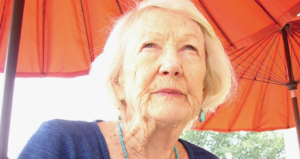
As an activist, Mary Lou and her husband Scott played a key role in saving Tubbs Hill in Coeur d’Alene from development. She also helped found the Kootenai Environmental Alliance in 1972 and the Idaho Conservation League in 1973. She helped draft KEA’s environmental health code and fought for development restrictions to protect the Rathdrum Prairie Aquifer from contamination from septic tanks. Mary Lou served in the Idaho Senate from 1984 to 1996. As a legislator, she helped protect many of Idaho’s pristine lakes and was a champion of Idaho’s Clean Lakes Act.
Mary Lou’s passions for education and conservation have led to a life of advocating for equal opportunities for all, and she is still involved in multiple conservation efforts in Idaho today. Along with groundbreaking work on environmental issues, she is a huge advocate for human rights.
2. Marcia Pursley: ICL’s first Executive Director
In 1970, Marcia Pursley moved to Idaho with her husband and their children. They bought a house in east Boise on the edge of the foothills – where her conservation story begins. A developer planned to build high-density housing in the hills behind Marcia’s neighborhood. At the time, there was no ordinance for Boise’s foothills. Marcia didn’t want to see the beautiful rolling hills behind her house filled with houses, so she put her kids in strollers and got to work – going door to door in her neighborhood, collecting petition signatures in opposition to the development. She also led residents to voice their concerns directly to the Boise City Council. Their efforts worked – development was slowed until more responsible plans were created.
Marcia’s successful organizing was noticed by environmental advocates in Idaho. Realizing there was no voice for conservation in the Idaho legislature, a group of conservationists formed the Idaho Conservation League in 1973. They asked Marcia to serve as ICL’s first Executive Director. Marcia says she had never even stepped into the Idaho Capitol building before and was busy raising her young children, but she was very interested in local planning and the absence of a foothills ordinance – so she said yes. Shortly after, the first ICL board of directors was formed and decided that a local planning act should be ICL’s highest priority. Marcia worked in the 1974 legislative session to support the Local Planning Act, but lobbyists who opposed it killed it at the last minute. This led ICL and others to push for a Sunshine Law in Idaho, requiring disclosure of political contributions and lobbying activity. Marcia’s former husband Ken Pursley wrote the Idaho Sunshine Law Initiative, ICL organized and collected enough signatures to get it on the ballot, and it passed in 1974 with nearly 78% support. ICL went into the 1975 legislative session with more experience and worked for the passage of the Local Planning Act. Marcia secured key votes for the act’s passage.
Although Marcia only worked at ICL for a few years, she helped build the framework for success in bringing a voice of conservation to the Idaho Legislature. Marcia’s kickstart into this work was her involvement with her Boise neighborhood, which she still does to this day – continuing to protect the foothills that so many others have come to know and love.
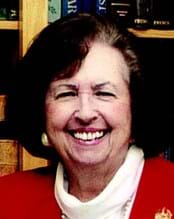
3. Bethine Church: A champion for Idaho Wilderness
Bethine Church, wife of Idaho Senator Frank Church, is an icon for politics and activism in Idaho. She was born in Mackay, Idaho in 1923 into a politically active family. Throughout her life, Bethine continued her family’s legacy of public service and was a lifelong supporter of the environment.
Bethine married Frank in 1947 and was an integral part of his career as a senator. She was active in all his campaigns and a true champion for protecting Idaho’s wild spaces. Together, they helped lead and secure the passage of bedrock environmental laws including the Wilderness Act, the Wild and Scenic Rivers Act, the protection of Idaho’s Hells Canyon and Sawtooth National Recreation Areas, and the Central Idaho Wilderness Act (now known as the Frank Church-River of No Return Wilderness).
Bethine’s environmental leadership continued after Frank lost his battle with cancer in 1984. She founded the Frank Church Institute at Boise State as well as the Sawtooth Society, a nonprofit dedicated to preserving the Sawtooth National Recreation Area (SNRA).
Bethine supported many other environmental organizations – was an active member of ICL and served on the governing council of The Wilderness Society. Bethine received an honorary doctorate from Boise State University and The Wilderness Society’s highest honor in 2009. Bethine died in 2013, leaving behind a legacy of conservation that is still evident today.
You don’t have to head all the way to the Sawtooths or “The Frank” to celebrate Bethine’s work. You can visit the Bethine Church River Trail, a 1.6-mile section of pathway on the Boise River.
4. Wendy Wilson: Founding member and first Executive Director of Idaho Rivers United
River culture runs deep in Idaho. A passion for wild rivers brought Wendy Wilson to the Gem State in the mid-1980s. Wilson’s river trips not only highlighted Idaho’s beauty, but the challenges that threatened her favorite places – overallocation, pollution, and dams. In an article Wilson wrote, she says she was inspired by the conservationists fighting these problems – and decided to dive into the work herself.
In 1988, J.R. Simplot announced a plan to divert 16 miles of the North Fork of the Payette River for a hydropower project. This lit a fire in Wilson. She helped found the Friends of the Payette, which collected 9,000 petition signatures and organized a campaign to save the river. Their efforts worked. The dam was stopped, thousands of people were now engaged with river protection efforts, and legislative action authorized a state rivers program.
Wilson’s conservation career took a new route in early 1990, when river conservationists came to consensus that Idaho needed a statewide organization with political insight to continue advocating for river protections in Idaho. Idaho Rivers United (IRU) was launched, and Wilson became the first Executive Director.
After helping build IRU from the ground up, Wilson made an impact on many other organizations. She served as executive directors for Snake River Alliance, Advocates for the West, and Idaho Conservation League. She currently works with volunteer programs, STEM education, suicide prevention, and land stewardship projects.
5. Liz Paul: Longtime environmental activist and community organizer
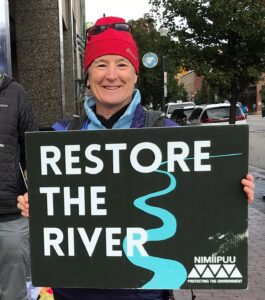
Liz Paul has had a long career in advocacy. She’s engaged thousands of people in social movements to influence environmental policy at the local, state, and national levels.
Liz’s passion for cross country skiing brought her to Ketchum, where she immediately connected with the environmental community. She became active in the Groundwater Alliance, a group that was working to protect the region’s groundwater from radioactive contamination at the time. Years later, Groundwater Alliance teamed up with the Snake River Alliance for advocacy work. Liz then became Snake River Alliance’s first executive director. Based in Ketchum, she partnered with activists across the region and country to build grassroots support for the protection of the Snake River Aquifer from further nuclear waste contamination and possible accidents. Liz says this is one of the proudest moments of her career, made possible by “a ragtag group of really dedicated people.”
Liz moved to Boise to work for “Friends of the Payette,” an organization that successfully worked to protect the Payette River. She continued her work on river protections at Idaho Rivers United, where she mobilized supporters from across the state to engage on issues.
In 2011, Liz founded the Boise River Enhancement Network – a network of people dedicated to promoting the ecological enhancement of the Boise river. Liz left BREN in 2021 and now runs her own business called Community, where she supports businesses, non-profits, governments and individuals working to improve their communities.
6. Margaret Fuller: Writer and trailblazer for women in the outdoors
Margaret Fuller wrote the book on getting outside in Idaho – literally. She’s authored five trail guidebooks, an historical book on Idaho’s ski areas, a memoir, and three books of natural history (on mountains, forest fires, and wild berries). Her love and respect for the outdoors shines through in all of them.
Fuller’s journey as an author arose from a personal need – after getting lost on trails in Idaho’s backcountry with only Forest Service maps to use, she decided to write a guide herself. Her first book, “Trails of the Sawtooth and White Cloud Mountains” was published in 1979. It was the first-ever guidebook to the Sawtooths and Idaho’s first trail guide. Many of her books have gone through multiple editions. She’s also written articles on outdoor recreation and mountain ecology, and has delivered hundreds of lectures on these topics.
Margaret’s writing, storytelling skills, and contributions to the community have won her several awards and honors, including a 1982 Writer of the Year Award from the Idaho Writers League, 1991 Achievement Award from the Idaho Trails Council, 2003 feature by Idaho Public Television for Outdoor Idaho, and 2010 Keith and Pat Axline Award for Environmental Activism from ICL.
Margaret’s books have led hikers, bikers and outdoor enthusiasts to explore some of the best that Idaho has to offer. And she’s inspired people to become advocates for Idaho’s public lands and wild spaces.
7. Gloria (Moore) Osberg: Outdoors writer and environmental advocate
Like Fuller, Gloria Osberg was a writer. Born in Washington state, Gloria spent time in both Washington and California before moving to Idaho. Even in her years living outside of Idaho, Gloria came back to Idaho during the winter ski seasons.
In the 1980s, Gloria worked at the Forest Service office in Ketchum, where she gained firsthand knowledge of the trail system in the mountain ranges around the Sun Valley region. In 1987, Gloria and Anne Hollingshead co-authored and published the hiking guidebook “Day Hiking Near Sun Valley.” This one-of-a-kind book was an instant success – people loved its user-friendly removable pages to take out for a hike and the plastic sleeves included to protect them. In 1995, Gloria wrote her second hiking book, “Easy Hiking Near Sun Valley.” Also an instant success, this book emphasized shorter hikes that families and handicapped people could go on, bringing even more people outdoors. That same year, ICL asked Gloria to update and reprint her first book. She did – and donated the copyright of both books and their future profits from sales to ICL.
In 2004, ICL honored Gloria with the Keith and Pat Axline Award for Environmental Activism. In 2011, the U.S. Forest, Wood River Land Trust, and ICL designated the Gloria Moore Osberg High Ridge Trail NO. 147 in her honor. A bronze plaque bearing her name was placed at the 9,000-foot summit of this trail in the mountains of central Idaho.
Gloria was actively involved with many other organizations, including The Wilderness Society, Idaho Trails Council, Wood River Land Trust, Edmonds Historical Museum, and Puget Sound Maritime Historical Society. Gloria passed away in 2018 after a long battle with Parkinson’s disease.
8. Nelle Tobias: Citizen conservationist, volunteer and generous philanthropist
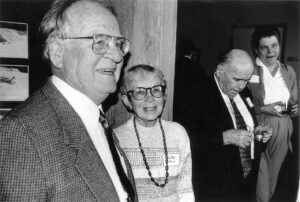
Nelle Tobias played a major role in conservation efforts in Idaho for more than fifty years. As an architect, she built a legacy in Idaho from the ground up. After serving as a landscape architect with the National Parks Service, she built the Edgewater Cabins in McCall in 1936.
Tobias was a talented writer, and used that to her advantage when writing letters and testifying on behalf of the environment. She was involved in multiple preservation efforts in Idaho, including the 1964 Wilderness Act and the preservation of Hells Canyon and the Frank Church-River of No Return Wilderness. She was also a founding member of the Idaho Conservation League.
Tobias funded many conservation efforts and organizations in Idaho. At home, she was committed to living sustainably – using solar power, driving fuel-efficient cars, being adamant about reusing and recycling. When Nelle died in 2005, she left her estate (a cabin that she designed and helped build on land that overlooks the meadows of Long Valley and Jug Mountain) to 20 local and national nonprofit organizations that she had been anonymously supporting for decades. Fund for Idaho’s Nelle Tobias Award for Philanthropy annually honors those who show extraordinary generosity and passionate vision for a better world, qualities that Nelle demonstrated in her life and legacy.
9. Boise Mayor Lauren McLean: Champion for climate action
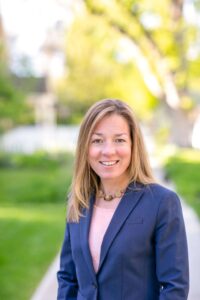
Boise Mayor Lauren McLean makes her love for the outdoors as crystal clear as Idaho’s cleanest rivers and lakes. McLean earned her MPA in environmental policy from Boise State University. In 2001, she led the historic Boise Foothills Open Space Campaign, helping to protect the Boise Foothills for future generations. She also worked at the Idaho Conservation League.
During her time on Boise City Council from 2011-2019, she led the effort to pass Boise’s 100% Clean Energy Plan. Her mayoral campaign included promises for action on climate change. Since becoming mayor, she has set ambitious goals to lead Boise into an environmentally and economically resilient future. Part of those goals includes making the city of Boise carbon neutral by 2050, and having 100 percent clean electricity for City of Boise government facilities by 2030. McLean continues to push for sustainability and responsible growth in communities. Along with being an avid trail runner and outdoors enthusiast, she is the first elected female mayor in Boise’s history.
10. Doris Milner: Longtime advocate and citizen conservationist
Doris Milner was a longtime advocate for wilderness in the west. Although she was from Montana, she also made big impacts in Idaho. In the early 1960s, Milner stumbled upon bulldozers along her favorite section of the Selway River – and immediately knew she had to do something about it. She learned that the Forest Service had planned a timber sale along the Selway River. This threat inspired her to jump into action as a citizen conservationist. She joined forces to form the Save the Upper Selway Committee. Those efforts paid off – the Selway-Bitterroot Wilderness (which straddles the border between Idaho and Montana) earned protections with the passage of the Wilderness Act in 1964.
Milner also worked alongside Idaho Senator Frank Church and others to secure designation of the Frank Church River of No Return Wilderness, along with advocacy for special places in Montana. She was also a lifelong member of the Montana Wilderness Association and also served as its president. In 1978, the American Motors Corporation named her one of 10 citizen conservationists of the year.
11. Jan Brown: Conservationist and first Executive Director of Henry’s Fork Foundation
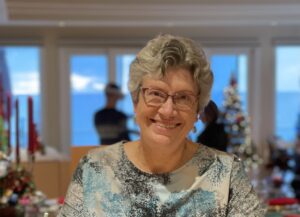
Jan Brown spent over 40 years conserving natural resources and advancing sustainability projects in the west. She got involved in conservation after moving to Idaho Falls in 1976, when she started working for Idaho State Parks. Jan also first got involved with ICL in Idaho Falls and later served on the Board of Directors. She recalls testifying at the Central Idaho Wilderness Act hearings, the passage of the Land Use Planning Act, and other groundbreaking environmental work in Idaho at that time. Jan says her time volunteering with ICL helped lay a strong foundation for her environmental work to come.
In the ‘80s, Jan served as a special assistant for natural resources and nuclear waste to Governor John Evans. In this position, she gathered recommendations on wilderness areas from different agencies, aggregating input from all interested parties and developing comments for the Forest Service before giving policy advice to Governor Evans.
In 1984, Jan was on the founding board of the Greater Yellowstone Coalition, a nonprofit dedicated to protecting the lands, waters, and wildlife of the Greater Yellowstone Ecosystem. In the ‘90s, she became the first Executive Director of Henry’s Fork Foundation – a nonprofit based in eastern Idaho that conserves, protects and restores the fisheries, wildlife, and aesthetic qualities of the Henry’s Fork and its watershed. Jan recalls the legislative efforts this work entailed, including the Henry’s Fork 279 legislative campaign – a push to protect 279 miles of rivers and streams in the watershed.
Jan later served a decade as the executive director of the Yellowstone Business Partnership, a partnership based in Bozeman that worked to bring sustainability awareness to businesses. She is now retired and lives in Idaho.
